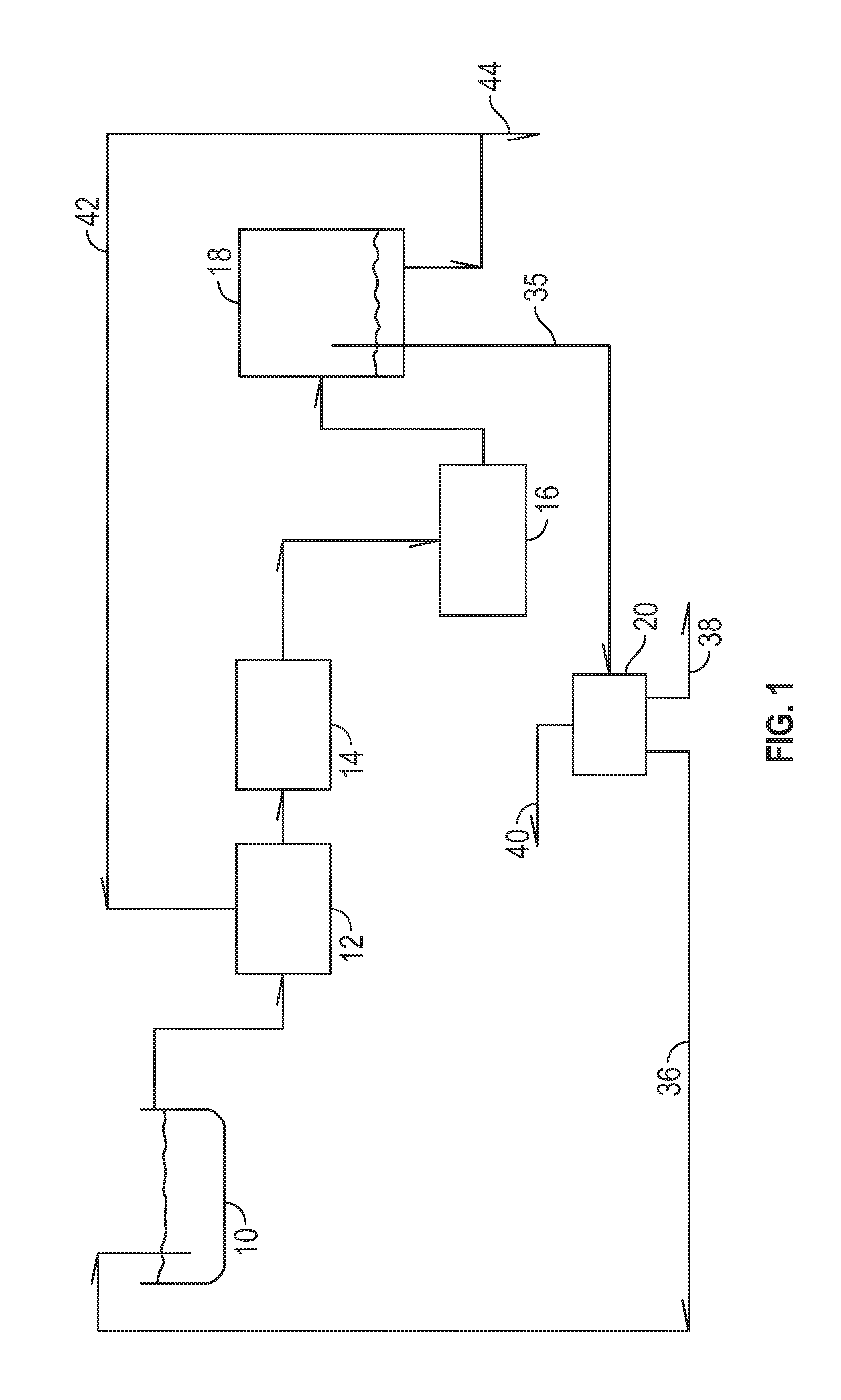Recovery of Oleaginous Tricyglycerols from Wastewater Title of Invention Treatment Plant Foams
- Summary
- Abstract
- Description
- Claims
- Application Information
AI Technical Summary
Benefits of technology
Problems solved by technology
Method used
Image
Examples
Embodiment Construction
[0020]This invention, in broad aspect, is a process for recovering biofuel grade microbial oils from normal foaming in wastewater treatment plants by harvesting and extracting oleaginous (oil producing) bacteria that are cultured in the form of a thick microbial foam. The process comprises harvesting nocardioform bacteria-containing foam from wastewater treatment plants, recovering triacylglycerols (TAG) there-from and, optionally, processing the recovered TAG to biofuel—particularly bio-diesel. This system takes advantage of the tendency for filamentous nocardioform bacteria to grow directly in aeration basin waters where, despite competition from other organisms, they are still able to collect as thick hydrophobic bulk foam that floats on the surface of the aeration basin waters. This bulk foam format facilitates harvesting and concentrating the cells, as well as reducing the amount 1 of excess water that must be removed prior to oil extraction. This provides a means of economical...
PUM
| Property | Measurement | Unit |
|---|---|---|
| Composition | aaaaa | aaaaa |
Abstract
Description
Claims
Application Information
 Login to View More
Login to View More - R&D
- Intellectual Property
- Life Sciences
- Materials
- Tech Scout
- Unparalleled Data Quality
- Higher Quality Content
- 60% Fewer Hallucinations
Browse by: Latest US Patents, China's latest patents, Technical Efficacy Thesaurus, Application Domain, Technology Topic, Popular Technical Reports.
© 2025 PatSnap. All rights reserved.Legal|Privacy policy|Modern Slavery Act Transparency Statement|Sitemap|About US| Contact US: help@patsnap.com

